You’ve probably heard that Persian culture is one of the oldest and most unique civilizations in the world, and if you’ve seen it portrayed in films, read a book where the action takes place in Iran, or seen a documentary about how intricately gorgeous Persian carpets are made, you know it’s real.
Whatever kind of introduction you used, Persian culture is rich in every conceivable way. Here is a list of what you need to know about Persian culture:
Persian Culture History
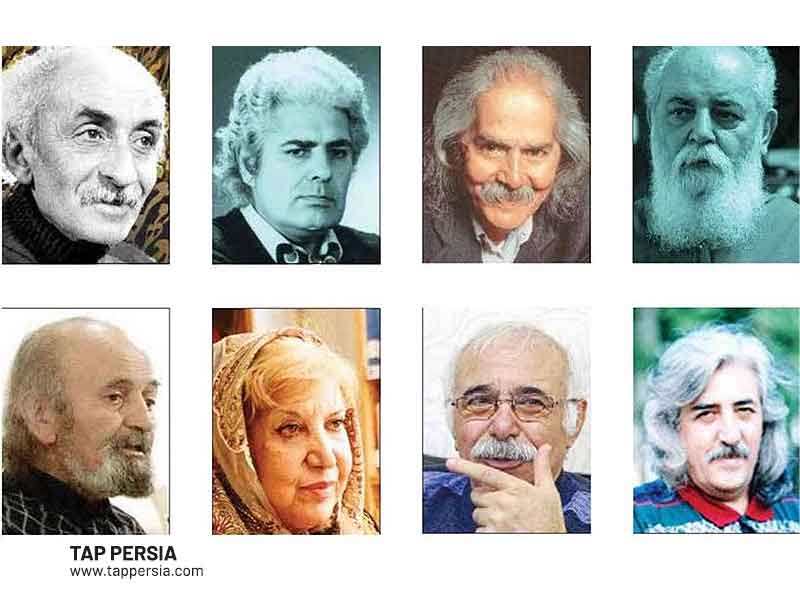
Iran has a very sophisticated and rich culture, and its historical cultural history is unmatched anywhere in the world. Iranians recall their culture with awareness as well. Iran is a historically rich nation with a rich history that includes civilizations like the Achaemenid Empire from antiquity. Despite political, religious, and historical changes, Iranians have remained deeply rooted in their past(Iran History).
Although Shia Islam has influenced daily life in modern Iran, the nation’s indigenous art, Persian literature, and architecture serve as reminders of its rich national past and a larger literary culture that once spanned the Middle East and South Asia. From a cultural perspective, the conflict between the Shia religion and Iranian culture occupied the majority of Iran’s modern history.
Iran is still renowned as a multi-ethnic nation despite the dominance of Persian culture, and the Ler, Armenian, Azeri, Kurdish, Arab, Balochi, Turkish, and other ethnic groups each have their own unique literary and historical customs that extend back to many centuries. They have a long history; among Armenians, they date back to the first century BC. These ethnic groups frequently share close ties with nearby non-Iranian civilizations.
The Language
Farsi is the primary tongue in Iran, formerly known as Persia. It belongs to the family of Indo-Iranian languages, a collection of Indo-European languages.
One of the most well-known languages in the Middle East and surrounding areas historically is Farsi, which is the official language of Iran. In addition to Iran, Afghanistan, Tajikistan, and the Pamir Mountains all speak Farsi(Iranian ethnicities).
The majority of Iranians speak Indo-Iranian, however, some also speak Semitic and Turkic. Persians transformed Islam from a faith with mostly Arabic roots to a more global religion by maintaining their own language. The Persian language evolved and became the primary literary medium for several poetry and religious works.
The Family
A family of languages known as the Iranian language family is spoken in the areas indicated on the map above. Old Persian, which is known through the cuneiform inscriptions of the Achaemenian rulers, and Avestan, the language of the Avesta, a collection of sacred Zoroastrian books, are the oldest recorded languages in the family.
Old Persian must be viewed as a direct ancestor of Middle and Modern Persian because it is obviously connected to the Southwest Iranian group (Payne 1990). There are three main Persian dialects: Dari (in Tajikistan), Tajiki (in Iran), and Farsi (in Iran) (Afghanistan). However, there are other languages in the family as well, including Balochi, Taleshi, and Laki.
Iran Religions
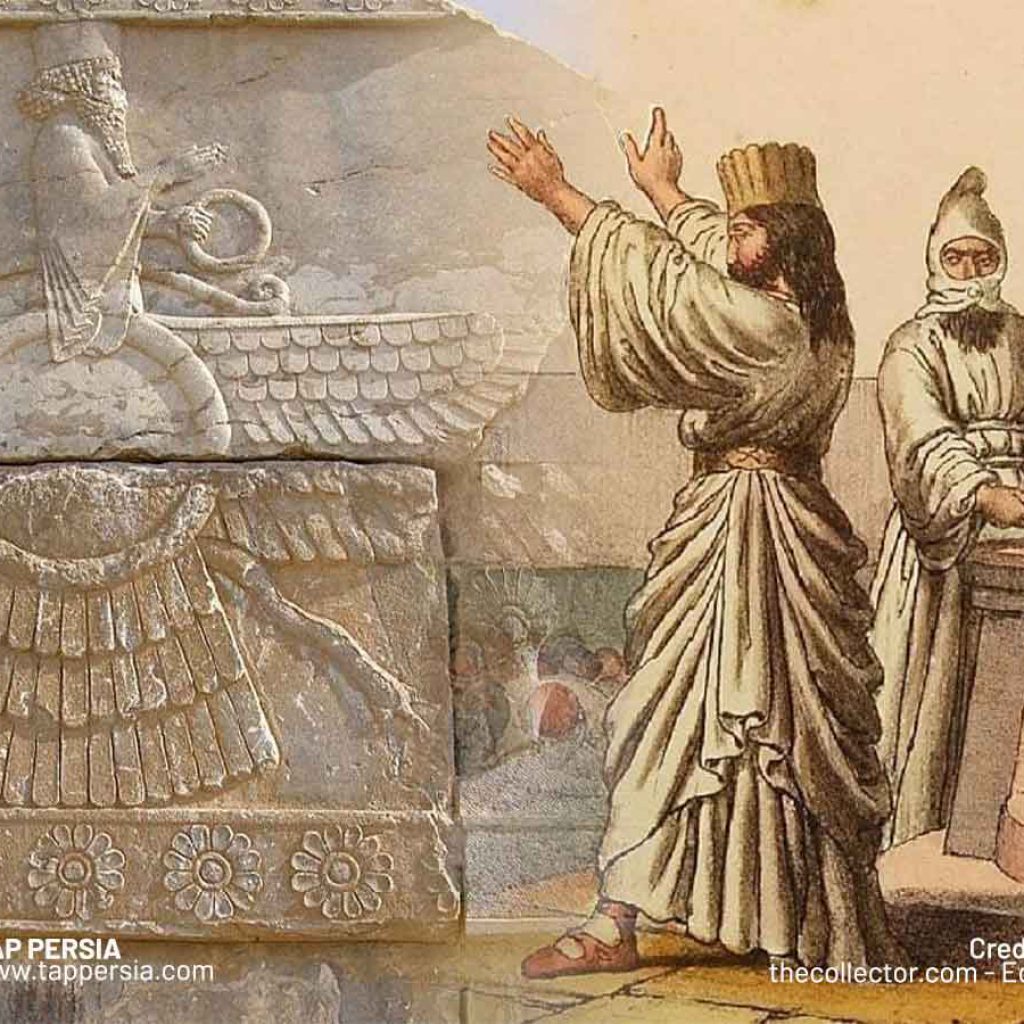
Religion in Iran is as diverse and complex as its rich cultural history. The dominant religion is Shia Islam, which has been the state religion since the 16th century and has significantly shaped the nation’s identity and societal norms.
However, Iran’s religious landscape extends beyond Islam, reflecting the country’s multi-ethnic composition. There are sizable communities of Sunnis, Christians, Jews, Zoroastrians, and Baha’is, each with their unique traditions and practices. The ancient religion of Zoroastrianism, in particular, has deep roots in Iran and continues to influence its culture and traditions.
Despite the dominance of Shia Islam, Iran’s constitution guarantees religious freedom, allowing these diverse communities to practice their faiths. However, the interplay between religion and politics often creates a complex dynamic, impacting the religious freedoms of these minority groups. The religious diversity in Iran is a testament to its rich history and cultural complexity, contributing to the country’s unique cultural tapestry.
Persian Culture Traditions and Customs
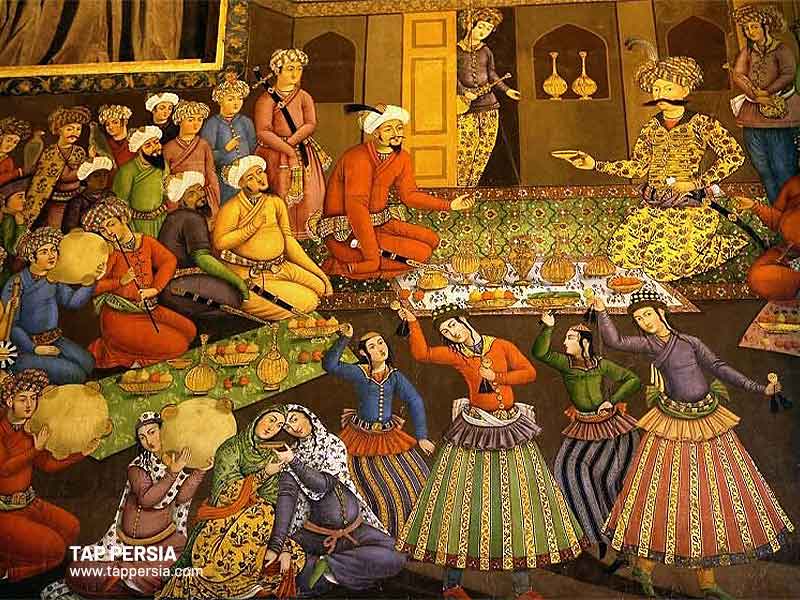
It’s essential to have a fundamental awareness of a society’s conventions in order to fully comprehend its people and culture.
There are many Iranian peculiarities and practices that are as commonplace to Iranians as drinking water, yet that can be extremely confusing to others. Continue reading to learn about 4 of the cultural practices that only Iranians will recognize.
Burning Espand
Iranians are a particularly superstitious group when it comes to jinxes. They will burn Espand, wild rue seeds, till they explode and waft the smoke over the heads of their loved ones to ward it off (or in case they feel as though they have already been jinxed). It’s not unusual to smell these fragrant seeds leaking out from beneath your neighbor’s door because they are also said to have purifying powers.
Take off your shoes!
Iranians are extremely hospitable, courteous, and kind because they treat visitors like guests. They hold that the visitor is adored by the Lord and that they should treat it with respect and affection when it visits their house. It’s a good idea to be aware of certain fundamental social manners and actions as an Iranian welcoming a visitor.
Chaharshanbeh Suri
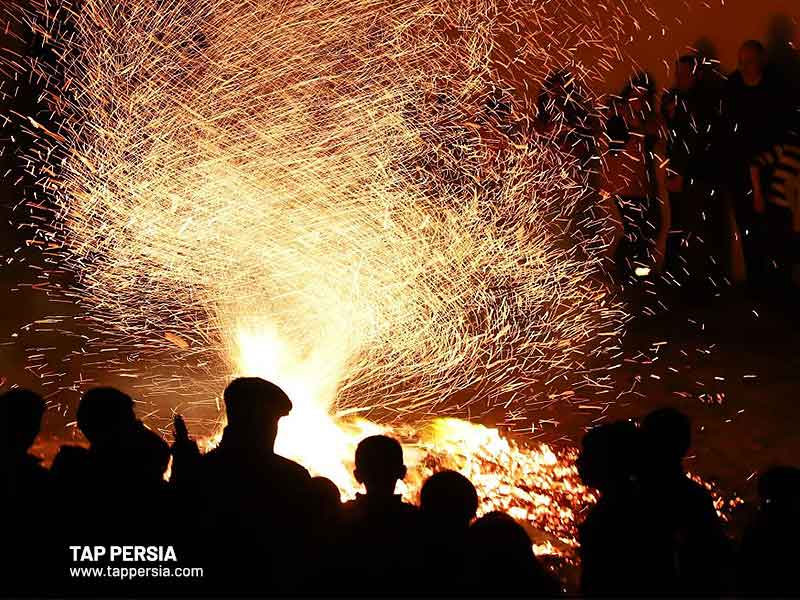
The Festival of Fire, also known as Chaharshanbeh Suri, occurs on the final Wednesday before Nowruz (the New Year). It has been a significant day for Iranians from at least 1700 BC, at the beginning of the Zoroastrian period.
If you like to celebrate this Christmas in a different way among people from different cultures, celebrating Christmas in Iran can be a good choice as explained in this article.
Taarof
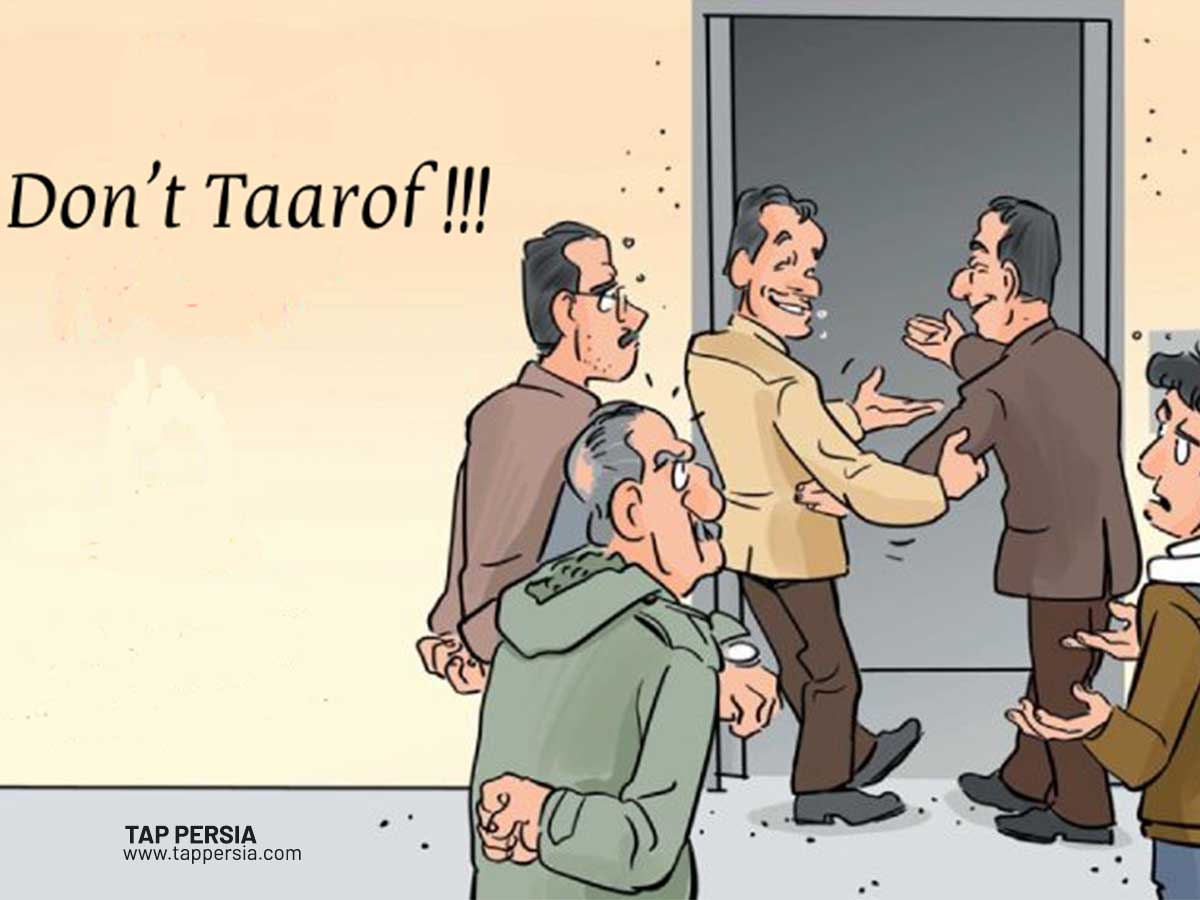
“You first!” and “Never, you first!” were undoubtedly heard as you entered the workplace through a little fence. It is an illustration of Taarof, a common instance of ordinary Persian traditions. There can be even graver ones. Even though it is really valuable, if you compliment someone in Iran, they may gift you anything. That is also a Taarof. The idea of taarof between friends and between the host and visitor is meant to underline that friendship comes first in the world.
As a result, Taarof always receives a rejection in response to an invitation or an offer before increasing their pressure. Taarof may be more refined and a kind of politeness that emphasizes respect and social standing.
Persian Culture Art
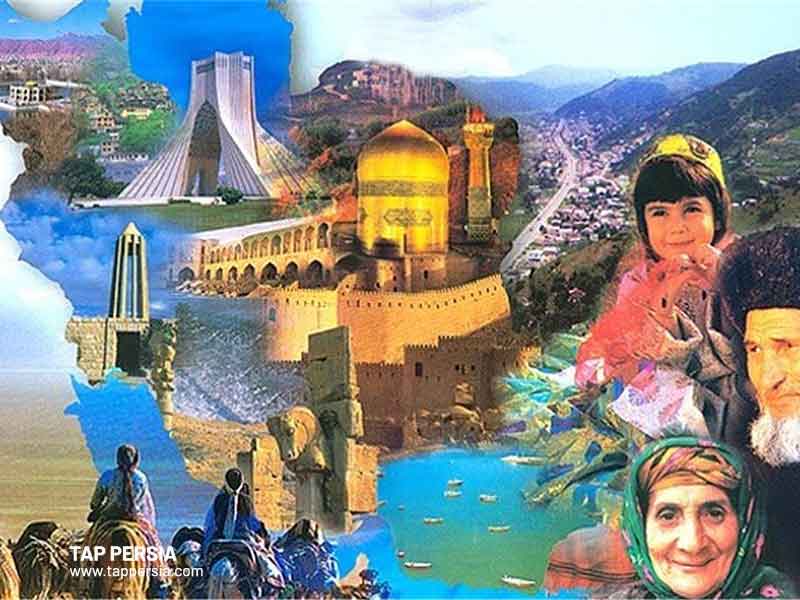
Due to the meticulous craftsmanship and cutting-edge techniques utilized to make the artwork, Iranian miniature paintings, ceramics, sculptures, book art, and metalwork are in high demand across the world. Iranian art has a profound legacy thanks to six significant turning points in its rich cultural history.
Persian Rugs
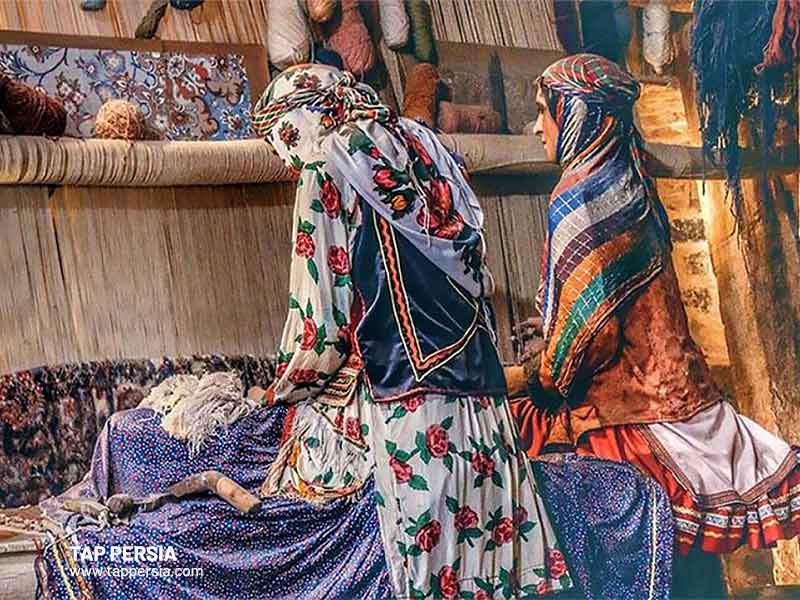
The exquisitely woven carpets are the most famous examples of Persian artwork.
The finest in its particular category is said to be the Persian carpet. Three-quarters of all handmade carpet production worldwide comes from Iran, which also exports most of them. During the Safavid Dynasty in the second half of the 15th century, Persian weaving thrived.
The main Persian carpet-producing cities are Ardabil, Tabriz, Kashan, and Isfahan. Although the designs of the vibrant displays are frequently inspired by book covers, geography may also have an impact on the tapestries. For instance, many of the carpets in Tabriz are produced for prayer and include a center medallion.
The carpets are made to resemble Persian gardens in the north, where horticulture is paramount.
Many people ask why a simple carpet can cost so much money, but even the most talented Persian weavers can only tie 12,000 knots each day, and because many carpets have over one million knots, the intricately woven works of art can take over a year to complete.
Persian Pottery
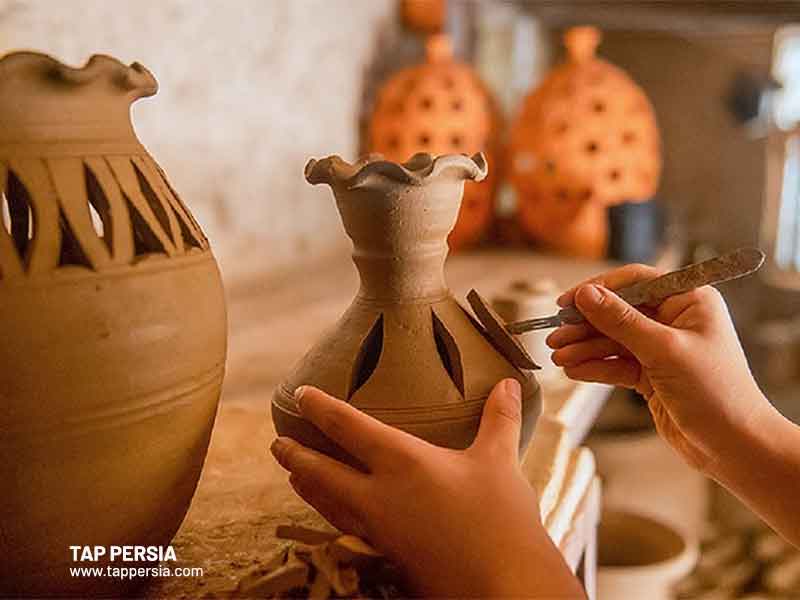
Iranian pottery has a vast history that goes back much further than the Persian Empire. Its origins can be traced to the early Neolithic Age (7th millennium BCE). Iran’s population began baking clay and crafting tools as a result of agriculture. As a result of the demands and changes brought on by political unrest throughout the years, Persian potters have adapted and improved newly imported styles while assimilating them into their own culture.
This creative mindset has endured over time and impacted several different cultures all around the world. ornaments created in traditional Persian shapes, such as pomegranates, horses, and birds.
Persian Calligraphy
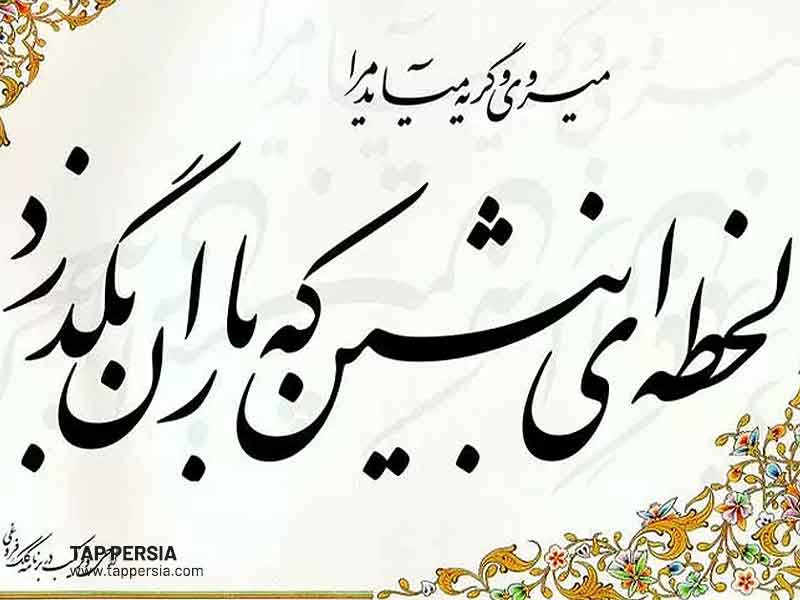
The art of calligraphy involves placing and inscribing words such that they are in harmony with one another to create beautiful symbols.
For inscriptions on monuments erected by the Achaemenid rulers, the Persian script evolved between 500 and 600 BC. The script known as “Khat-e-Mikhi” or “Script of Nails” was composed of horizontal, vertical, and diagonal characters that were fashioned like nails.
Other writing systems like “Pahlavits” and “Avestaee,” which required writing on animal leather sheets with a feather pen, appeared several centuries later. Surprisingly, “Sols” and “Naskh,” Arabic scripts that were developed some centuries later, shared a lot in common with these scripts.
Persians adapted the Arabic script to the Farsi language once Islam began to spread in the seventh century. The 28 Arabic letters of the Arabic alphabet were expanded by 4 to create the 32 Persian (Farsi) letters that make up the modern Farsi alphabet.
Ebn-e-Moqlah Beyzavi Shirazi performed a study and looked at six main calligraphy styles in the tenth century. As “Mohaqqaq,” “Reyhan,” “Sols” or “Thuluth,” “Naskh,” “Reqaa,” and “Towqee,” he classified them.
Then Hassan Farsi Kateb created “Taliq,” a new style, by fusing the “Naskh” and “Reqaa” styles. The most beautiful type of Persian calligraphy, “Nas’taliq,” was created by master calligrapher Mir Ali Tabrizi by combining Naskh and Taliq.
The most widely used current Persian calligraphy style that mimics natural curves is “Nas’taliq.” The development of “Cursive Nas’taliq” or “Shekasteh Nas’taliq” in the 17th century allowed for more script versatility.
Persian Dance
For many years, dance (Raghs) has played a significant role in defining Persian culture and identity. Particularly in Zoroastrianism, dancing played a prominent part in religious rites. Dancing was a widely-respected art form under the Persian Empire, as well as the Achaemenid, Parthian, and Sassanid empires.
Iran has a huge variety of dance styles based on regional and cultural diversity.
And because Iran is home to so many different ethnic groups, there is a wide range of dance styles to choose from, from simple folk dances to intricate routines.
But studies reveal that the earliest known Persian dance is a rhythmic exercise that represents Mithra worship. The Mithrakana or Mehrgan rites were associated with this kind of Persian dancing. Even the Persian Emperors took part in the worshiping and dancing at these rituals.
This dance involved the sacrifice of a bull and was said to have the effect of reviving one’s vitality and energy.
Persian Old Movies
Before the invention of film, the theatrical performing arts of Iran included Marionette, Saye-bazi (shadow plays), Rouhozi (comical performances), and Ta’zieh.
The public was introduced to film, but its cultural and economic potential remained unexplored. As a result, theaters initially saw a developing tendency that revealed the economic benefits of film. He was equated with the Iranian Constitutional Revolutionaries, and as a result, Mirza Ebrahim Khan Sahhafbashi’s Kinetoscopes corridor was shut down after just a month and he was forced to leave Iran. The public theater owned by Rousi Khan was next in line. It, too, didn’t last for a very long time since Mohammad Ali Shah fled to another country and the public theater was looted amid battles between him and Constitution Revolutionaries. Following him, Ardeshir Khan Armeni presented the true meaning of running and employing movies, and he did so for a very long time(Iranian old movies).
Iranian Food and Cuisine
Iranian cuisine is a reflection of the rich history and diverse culture of the country. With its unique blend of flavors, fragrant herbs, and spices, Iranian food offers a delightful culinary experience. Persian cuisine is known for its exquisite use of ingredients such as saffron, pomegranate, dried limes, and rosewater, which add distinct flavors to the dishes.
One of the most iconic dishes in Iranian cuisine is “Chelo Kebab with Iranian Bread“, which consists of succulent skewered grilled meat, usually lamb or chicken, served with saffron-infused rice. The meat is marinated in a blend of aromatic spices and grilled to perfection, resulting in tender and flavorful kebabs. Another popular dish is “Ghormeh Sabzi,” a fragrant herb stew made with a mixture of herbs like parsley, cilantro, and fenugreek, cooked with tender chunks of meat, red kidney beans, and dried limes.
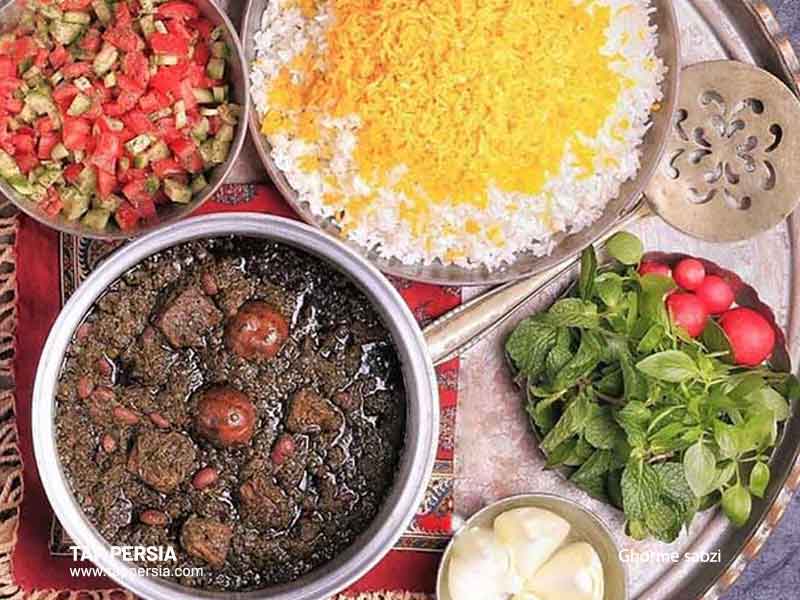
Rice holds a special place in Iranian cuisine, and “Tahdig” is a beloved rice dish. It is a crispy golden crust that forms at the bottom of the pot while cooking the rice. It is often flavored with saffron and served as an accompaniment to various stews and kebabs. Another rice dish is “Zereshk Polo,” a vibrant combination of saffron-infused rice, barberries, and slivered pistachios, offering a balance of sweet and tangy flavors.
Iranian cuisine also features a variety of delicious vegetarian and vegan options. “Mirza Ghasemi” is a smoky eggplant dish cooked with tomatoes, garlic, and eggs, while “Kashk-e Bademjan” is a creamy eggplant dip flavored with caramelized onions and tangy whey. “Ash Reshteh” is a hearty soup made with a medley of beans, lentils, herbs, and noodles, often garnished with crispy fried onions and a dollop of tangy yogurt.
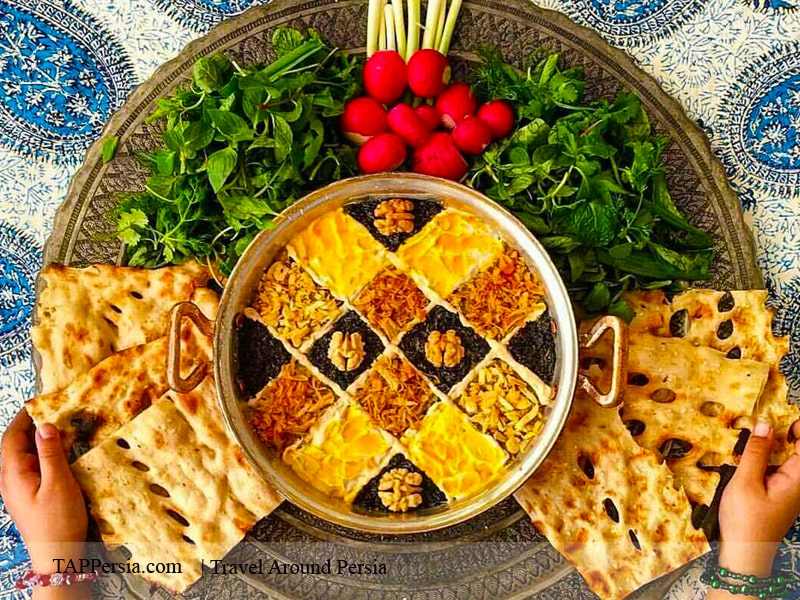
To complement their meals, Iranians enjoy aromatic beverages such as “Doogh,” a refreshing yogurt-based drink mixed with water and flavored with mint and dried herbs. And for those with a sweet tooth, Iranian desserts like “Gaz,” a nougat made with pistachios and rosewater, or “Faloodeh,” a refreshing frozen dessert made with thin vermicelli noodles and flavored with rosewater, provide a delightful ending to a meal.
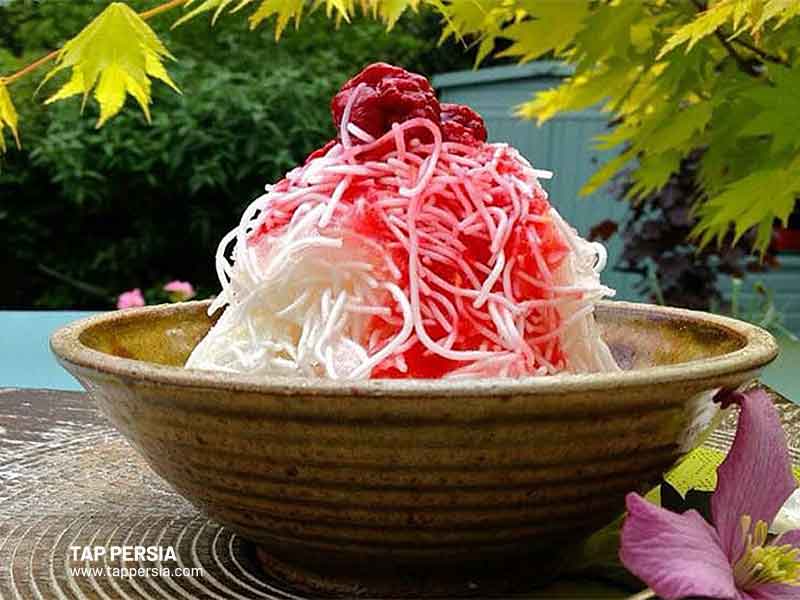
Iranian cuisine not only satisfies the taste buds but also reflects the warmth and hospitality deeply ingrained in Persian culture. Sharing a meal with family and friends is an important part of Iranian customs, fostering a sense of togetherness and celebration. The flavors, aromas, and traditions of Iranian food offer a glimpse into the vibrant and diverse culture of Iran, making it an unforgettable culinary experience.
Iranian Traditional Clothing
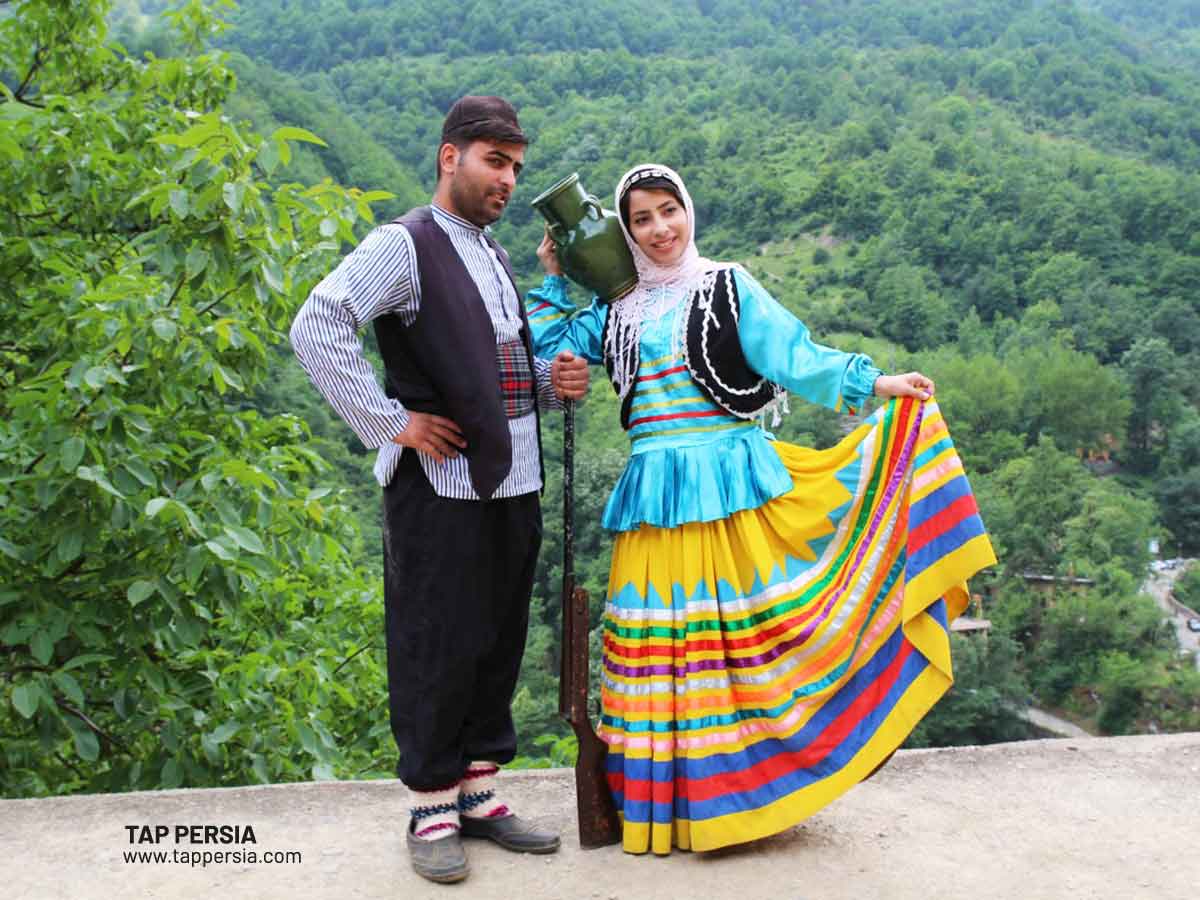
Traditional Iranian clothing is a vibrant reflection of the country’s rich history and culture. It varies significantly across different regions and ethnic groups, embodying the diversity of the Iranian people. For instance, the nomadic Bakhtiari tribe wears versatile clothes that are designed to adapt to the extreme weather conditions they may encounter during migration. In other regions, you might find women wearing a “chador”, a full-body cloak, or a “manteau”.
There’s also the “qaba”, a long coat featuring decorative designs and motifs, traditionally worn over loose trousers. Men’s traditional attire often includes the “shalwar”, or baggy trousers, and a tunic or “kurta”. These traditional garments are often made from local materials and decorated with intricate embroidery, showcasing the remarkable craftsmanship of Iranian artisans.
It’s important to note that while these traditional clothes are still worn, especially during festivals and ceremonies, many Iranians wear contemporary, Western-style clothing in their daily lives, especially in urban areas.




Comment (0)